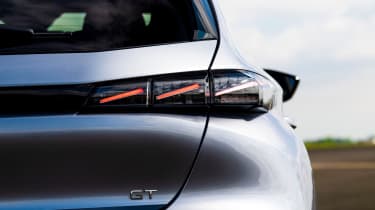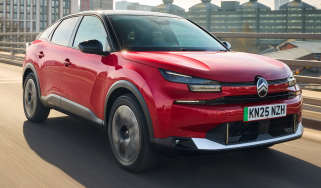Peugeot 308 review - MPG, CO2 and running costs
The 308 petrol and diesel models offer good real-world fuel economy, but the efficient plug-in hybrid is quite expensive to buy

With a starting price of more than £28,000, rising to around £42,000 for a top-spec plug-in hybrid model, the Peugeot 308 isn’t particularly cheap to buy. It does, however, provide strong fuel economy figures across the range.
A petrol-engined 308 should average around 43.3mpg (under the current WLTP testing procedure), although this could be as high as 51.9mpg if you go for a version with smaller wheels and less kit.
Opting for diesel power brings obvious improvements to fuel economy – the 1.5-litre BlueHDi unit fitted to the 308 claims between 50.1-59.6mpg on the WLTP combined cycle. During our own testing of the 308 diesel, we saw an average of 54.1mpg.
CO2 emissions, at 123-148g/km, aren’t particularly impressive, although with the industry march towards full electrification, it’s harder than ever for pure petrol and diesel cars to sell their green credentials. Company car drivers probably won’t be rushing to secure a purely-combustion powered model because these CO2 outputs incur a Benefit-in-Kind tax rate (BiK) of 30-31 per cent.
The 308 plug-in hybrid models offer wider appeal, firstly with the ability to run on electric power alone for around 40 miles and also by producing far lower CO2 levels (23-25g/km). This means BiK rates start from just 8 per cent. It’s important to remember, though, that the PHEV versions are significantly more expensive to buy than their fossil-fuelled siblings.
After covering over 6,000 miles in our plug-in hybrid Peugeot 308 Allure Premium long-term test car, we struggled to achieve over 20 miles of EV range. However, it did return well over 70mpg.
Insurance
Choose any pure petrol or diesel-powered 308 model and insurance costs should be fairly reasonable. Most versions fall into insurance group 19, with the GT and GT Premium cars in either group 20 or 21.
Premiums will probably get a little more expensive if you move up to the 177bhp plug-in hybrid, because it starts from group 26, while the 222bhp PHEV is in group 29 or 30, depending on which trim you specify.
Depreciation
Residual values were not a strong point for the previous-generation 308. After a typical three-year/36,000-mile ownership period, buyers could only expect to see a return of around 39 per cent of their car’s original value come trade-in time.
The latest 308 range fares much better, retaining 47-49 per cent of the initial price after 36 months of driving. There’s little difference between the petrol, diesel and plug-in hybrid versions, although the SW estate fares slightly better than the hatchback. This version holds on to up to 50 per cent of its initial value.











